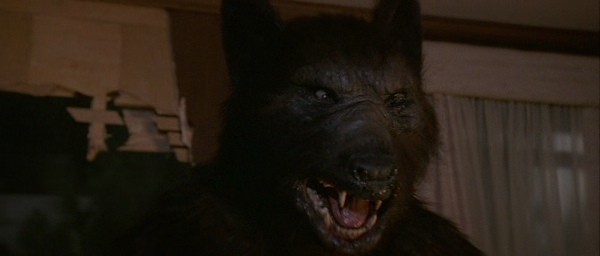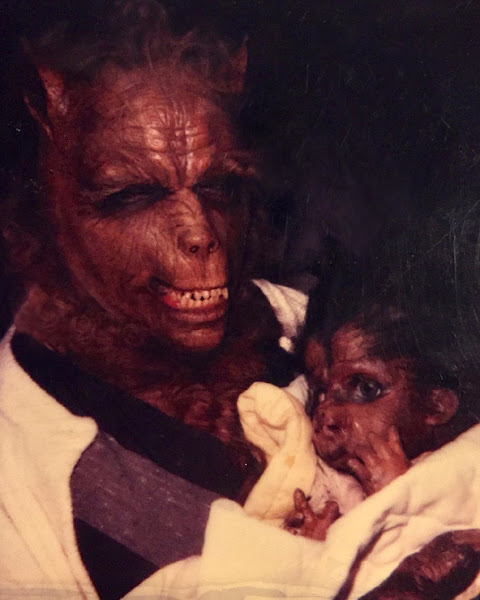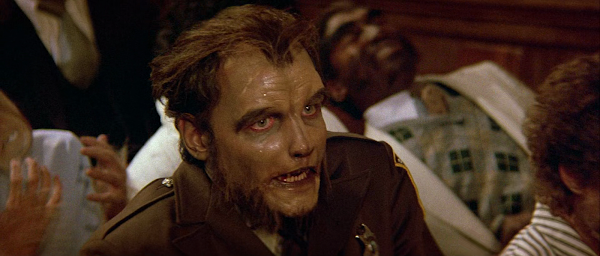De Laurentiis brought in the famous special effects artist Carlo Rambaldi to realize the werewolf form of the reverend Lowe, but was unimpressed with the initial design, forcing Rambaldi to reject it and start once over.
Attias recalled; 'There were several discussions about what sort of creature we wanted to create and it went through many transformations, if you will - on paper anyway - until we got something that we felt was the right look.'
Rambaldi revised the werewolf's design but De Laurentiis was still unsatisfied, causing production to fall behind schedule. This was not helped that Rambaldi was working with little money, something De Laurentiis insisted was only right as 'Rambaldi owed him a favor'.
The head itself was entirely animatronic, and according to cinematographer Daniele Nannuzzi, had small holes under the muzzle to allow actor Everett McGill to see. McGill, who portrayed Lowe in the film, was not originally meant for the werewolf suit; he was chosen when De Laurentiis got difficult about the dancer originally hired to wear it.
The animatronic head's expressions were controlled by levers that were connected to the mask via 'cables going out of the wolf's ass' as Nannuzzi so colourfully put it. The bodysuit and head were both coated in bear fur. Attias recounted;'Carlo designed a full suit that did not involve makeup appliances, It simply involved an actor slipping into the outfit, and there was a system of cables that allowed for manipulation of the various parts of the wolf's face, a system handled by four to six people off-camera. For the sophisticated kind of creature it was, it was surprisingly simple to get ready for shooting'.
Rambaldi was only responsible for the main werewolf suit; the rest of the film's effects were overseen by Michael McCracken, including Lowe's transformation sequence.The transformation prosthetics were sculpted by Jeff Kennemore. Unlike the 'change o head' puppets used in The Howling and American Werewolf in London, the 'change o parts' were latex masks with animatronic mechanisms underneath.
This allowed for Everett McGill to still move around and have his eyes be visible during the transformation in the shed. I don't know if the transforming head was worn by McGill or was a puppet head though.
Dan Attias remembered how taxing it was to shoot Lowe's shapeschanging scenes; 'The transformations, on the other hand, necessarily take a great deal more time in the shooting stage because each makeup appliance would require anywhere from a half an hour to four hours to put on. We would just have to schedule the shooting days so that we'd have something to do while the principal actor who was being made up was having that work done'.McCracken also supervised the church transformation scene, which required, according to Nannuzzi 'thirty or forty makeup artists' for the 'almost one hundred wolves'. Of particular notice is the nursing mother werewolf, cradling a baby werewolf that itself was realized as a puppet! The various transformed churchgoers were achieved with facial and hand prosthetics.
Sources:
- Fangoria #48
- Sense of Scale (2011) (segment interviewing Daniele Nanuzzi)
- Portalville interview with Dan Attias





































No comments:
Post a Comment